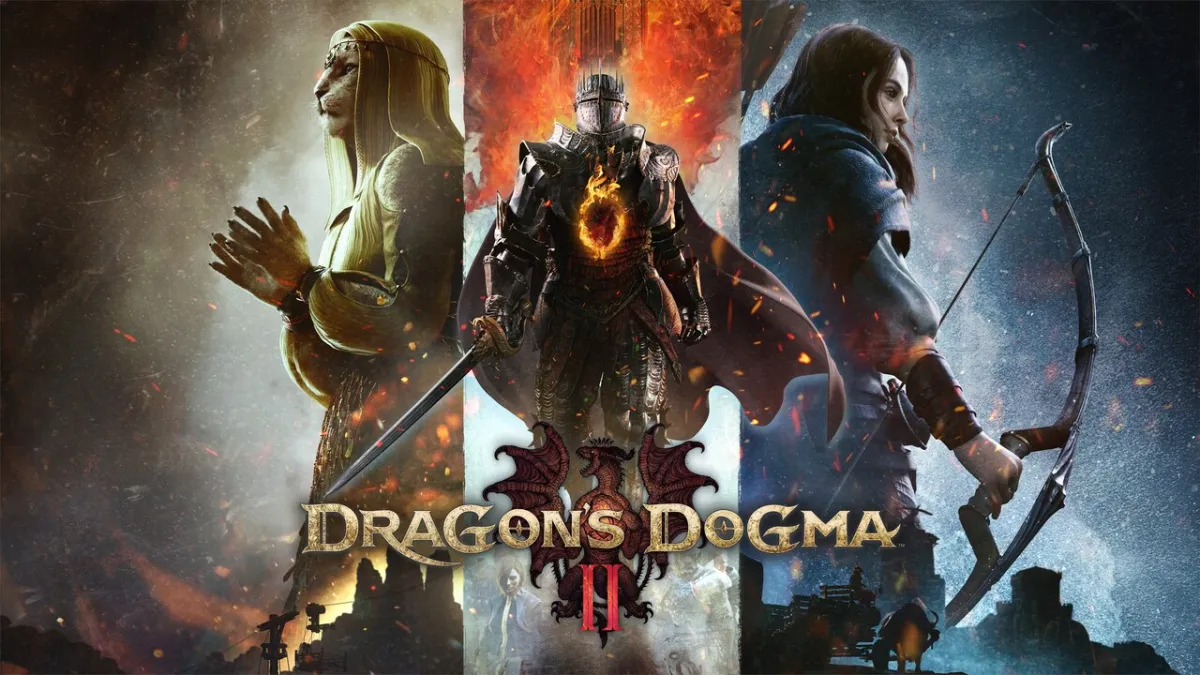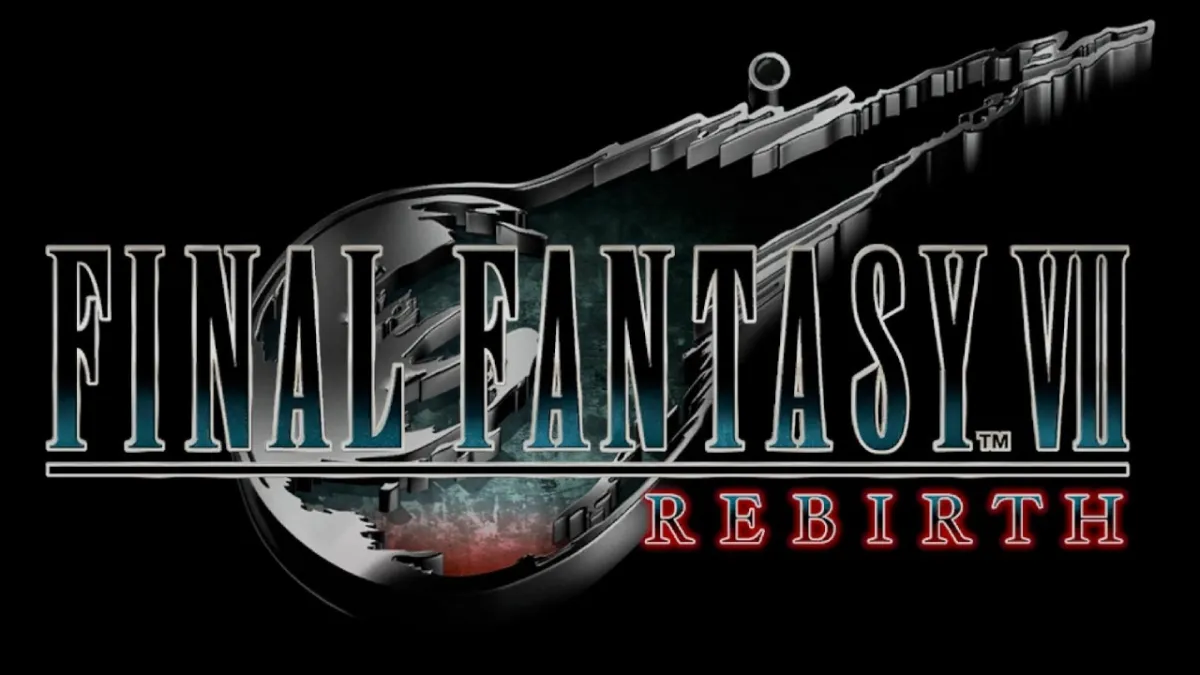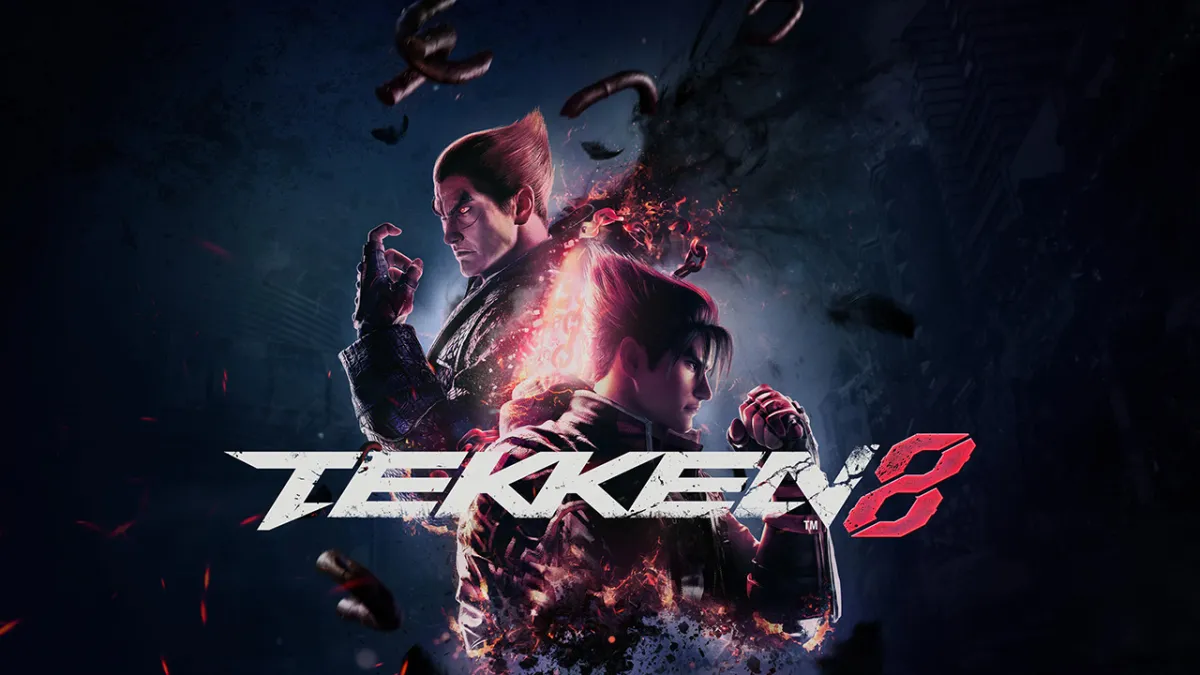Xenoblade Chronicles as a series began in earnest as a new form of the Xeno metaseries of RPGs first started with Xenogears in 1998, a game from which director Tetsuya Takahashi and others from his staff then created the studio Monolith Soft, before ultimately being acquired by Nintendo in 2007. The first Xenoblade Chronicles was released in 2010 originally only in Japan and was quickly recognized for its gameplay, story, worldbuilding, characters, and exceptional music. From there began the franchise as we know it, with several installments, and remakes, and began its reign as Nintendo’s strongest JRPG property, continuing it with this release. Here is our review of Xenoblade Chronicles 3.
What Kind of Game is Xenoblade Chronicles 3?

Xenoblade Chronicles 3 is a Japanese action role-playing game, with a heavy focus on its plot, distinctive main and supporting characters, and massive explorable world. It is similar in scope and emotional depth to another contemporary mainstay, Final Fantasy, but with its distinctive designs and gameplay mechanics that set it apart as truly unique, such as a highly flexible class system to customize character builds and load-outs for battle. Instead of opting for either a turn-based battle system like in classic JRPGs or constantly trying to reinvent itself like with modern Final Fantasy, Xenoblade has established its twist on the system, rendered in real-time, with this installment allowing you to play as any of the 6 main characters, swapping freely during battle.
The setting and genre sit comfortably in the science-fantasy realm, with the clashing kingdoms, hero-knights, supernatural, and spiritual elements of fantasy, but juxtaposed with mechanical engines of war, technological advancements, and lofty philosophical concepts of science fiction. In this case, the world of the game is Aionios, a world plagued by ceaseless conflict between its 2 warring kingdoms, Keves and Agnus. The game introduces you to its 6 playable main characters through this conflict, wherein 3 characters represent each of the nations, with Noah and Mio being the main protagonists of the bunch.
The game, typical of JRPGs, introduces you to one small part of the world, but what is special about this and other Xenoblade titles is that even the early areas are quite large and open to exploring. You’ll often find the number of quests and tasks you perform will be staggering, and it carries itself very similarly to a Massively Multiplayer Online RPG in that sense. The objective of the game is fairly complex, but the core of your experience is to see the plot through; however, you’ll find that, much like with many JRPGs, once you complete the story, there are plenty of tasks and quests you can still perform, making for a sizeable post-game experience. And of course, much like with any JRPG worth its salt, it features a gorgeous, emotionally evocative soundtrack, which we will talk about later on.
A Life Sent On

Xenoblade Chronicles 3 introduces players first to Noah, an off-seer, a soldier whose primary focus, when not in combat, is to send off his fallen comrades with a song ritual. As an off-seer performs their duties, the life of the soldiers visibly departs from their corpses (known as husks in this case) as motes of light as they go into the sky. Noah, and his comrades who hail from Keves, have known this as the only way of life since the early years of their collective, drastically, short, lifespans. Noah himself reflects on the irony of this despite the name of their shared world, Aionios, meaning ‘eternity’. Little did he know just what that would come to mean.
It isn’t until a chance encounter with a stranger aboard a crashed vessel, and the Agnus unit also sent to intercept at this site, that Noah and his comrades have their world turned upside down. The Kevesi and Agnus form a truce as they learn of an alternative to the endless cycle of war they were born to, and, as visible on the revealed face of the stranger named Vandham, life had the potential to be far longer than 10 years, or ‘terms’, as they’re called in the game. The different characters showed different reactions to these revelations, but ultimately, their common desire coming out of this encounter was a newly-discovered desire to live for a purpose beyond waging war and perpetuating a cycle of death. They begin this journey with passion and individually embark on their internal paths to self-actualization in the process.
The plot, from there, takes some pretty major tonal shifts and explores lofty philosophical concepts such as existentialism, beliefs on death, reincarnation, and the afterlife, coping with loss, the ‘war is peace’ paradox, and much more. There are some interesting themes in common with ‘Learning to Be Me’ by Greg Egan, or concepts similar to those from the modern reimagining of Battlestar Galactica, particularly surrounding life and death for the different factions (but also for creative, but obvious, replacement words for your typical profanity due to their upbringing). Much of the game’s plot is spent by the main and supporting characters ruminating on what they want to accomplish, what freedom from the cycle of war will even be like, what their place would be in such a world thereafter, and whether they would even be there to see it or leave their legacy.
You Will Know Our Names

One of the most fascinating parts about this game is just how well it presents its characters. The 6 main characters of the game are Noah, Lanz, Eunie, Mio, Sena, and Taion, as well as their 2 Nopon companions, Riku and Manana. Beyond this initial cast is an enormous ensemble of eclectic supporting characters, as well as optional recruits known as Heroes, leaders of the colonies spread across Aionios, essentially military outposts that are scattered across the land in the place of towns or cities. Much of the game, beyond going through the increasingly complicated plot, is spent interacting with these colonies and communities, forging bonds with their leaders, and liberating them from the nefarious consuls who control them from behind the scenes.
The consuls are part of Moebius, the antagonists the player will first meet. They are nefarious, masked villains with a commonly-shared cruel streak and penchant for viewing their soldiers as their pawns, capable of transforming into hideous, deadly humanoids capable of frightening feats of power and supernatural ability. As revealed in certain characters, such as J, among others, these are characters who encountered their twisted versions of self-actualization, embracing their potential and acknowledging others for who they are; however, as a consul, these characters invariably see the rest of the world as playthings and cannon fodder. Things get worse for our heroes from there, but to divulge further would risk giving spoilers.
With a runtime that can easily occupy players for upwards of 100 hours, the game takes ample time in pacing out narratives for each of the main characters, while also introducing Hero archetypes in their own stories with fascinating backgrounds and satisfying conclusions in their own right. You also get access to the numerous alternate class options you can use to customize how your main characters function in battle, a feature that’s even more flexible than its iterations in previous games, allowing you to essentially “hot-swap” characters and customize their movesets. But the main characters are what you’re here for, and these individuals are wonderfully executed. Their principal paths and struggles go as follows:
Noah is a visionary, seeking a purpose for his life beyond war, and witnesses the extent of damage grief can have on one’s psyche; he mourns the loss of everyone and bears each death with heavy remorse, to the point of sending off enemies or those who never truly lived out of a sense of duty. Lanz struggles with allowing himself to be vulnerable to even his closest allies. Eunie encounters dark, deeply-suppressed memories and must confront her fears and live in the present. Mio has only 3 months left to live before her life cycle is complete, and wrestles with the idea of dying in the sendoff ceremony called the “Homecoming” before she can see the group’s visions fulfilled. Sena, despite a strong demeanor, has to learn to step out from the shadow of her comrades and learn how invaluable she is to her team. Taion must move on from personal trauma and his greatest failure as a tactician and teammate.
These main characters grow to trust and even love one another as friends and family. There’s a particularly poignant scene, where, without spoiling anything, the group tries to break themselves and their friend free, relentlessly, in between shots of the moon where it visibly changes phases, indicating their struggle endured for weeks without giving up. They address problems and threats thoughtfully, and with a great tactical sensibility – for which Taion steals the show – instead of resolving everything with convenient Deus Ex Machina, they figure out the weaknesses and outsmart their foes, instead of getting angry and mysteriously increasing their power levels because ‘reasons’. The 6 main characters are each paired off, males with females, as they bond and discover common ground with one another.
There is no apparent romantic tension at first, given their nature as 9-to-10-year-old characters created only for war and not even having parents – this changes with later revelations in the game. It creates an interesting angle when they first see a character who is visibly aged and perplexed by their appearance, and this becomes more significant as the plot develops. As a result, this creates a complicated glimpse into perceptions of reproduction and sexuality from the outside, as characters with seemingly no progenitor, and despite it being so utterly not a part of the human condition, the plot takes a powerfully humanistic approach to show how the protagonists react to this information.
The Visuals
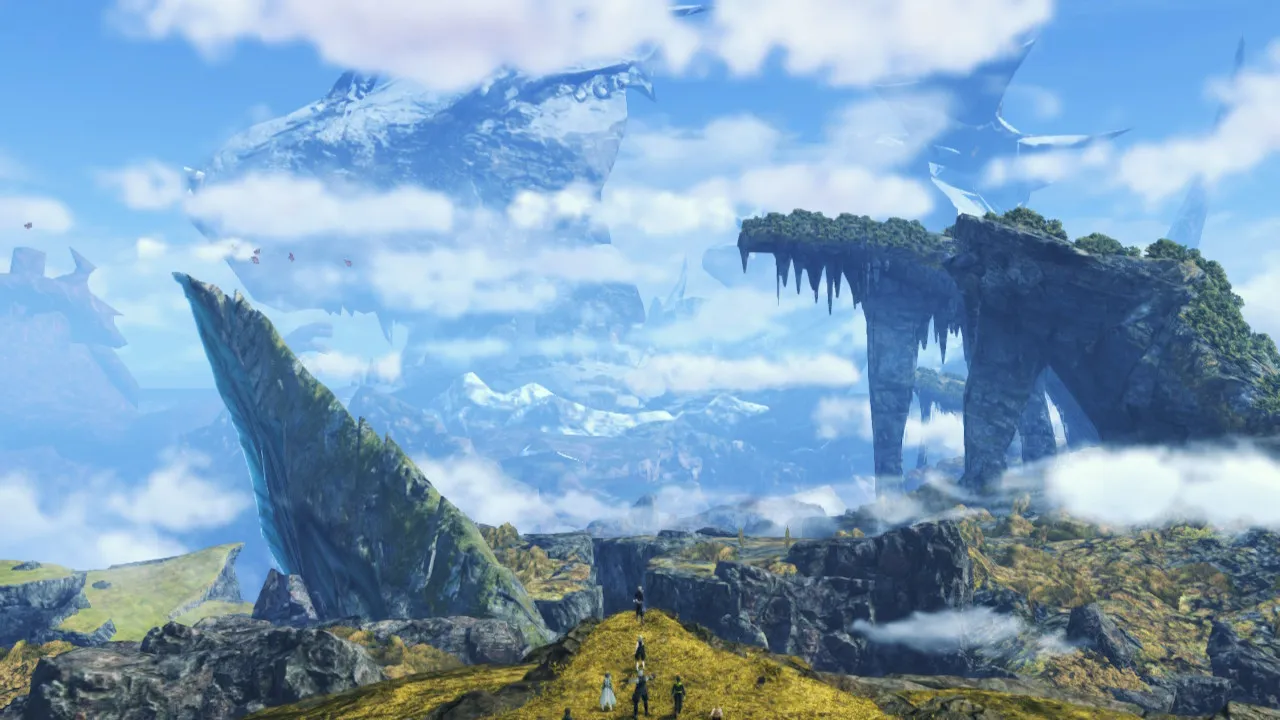
Xenoblade Chronicles 3 doesn’t attempt to approach photorealism in rendering its characters or world, opting instead for a colorful anime aesthetic, with characters and scenery sporting cel-shaded designs. One of the most iconic visual aspects of any Xenoblade Chronicles game, which is powerfully present in this sequel, is the use of vistas to convey a vast, lush world for you to explore. While you’re not on the backs of floating titans in the air this time around, the world is incredibly vibrant and full of life, and the first time you go out on the waters of the in-game ocean, you truly feel the influence of classics like Chrono Cross and Baten Kaitos on full display while you try to pull your jaw up from the floor.
Characters are brought to life expertly with animation that distinguishes each of them, down to their poise and expressive eyes, the lattermost being so captivating that you can’t help but watch them in pivotal moments, being able to gauge the characters’ exact feelings in those gazes. Body language is crucial, really selling characters like Sena, Ghondor, Riku, and Manana, while also effectively rendering children as more than just mini-versions of the adults, them struggling with the heft of their weapons, or attempting to emulate the mannerisms and movement of adults despite their clumsiness and short stature in some cases.
Despite the graphical limitations of the Switch hardware, battles and enemies are rendered very well, and they also translate well on the overworld as you move about freely. Attack effects and occasionally chaotic battles cause the framerate to drop significantly, but due to the passive nature and lack of constant need to be in control of the flow and action, it’s forgivable and passes quickly. There are also moments where concepts, although minimalistic, are executed with stunning results, like Taion’s signature Mondo weapon, flowing like the wind and effortlessly forming around enemies before bombing them mercilessly.
Cutscenes, in particular, are wonderfully executed with cinematic grandeur, the stars of which being ones featuring consuls who have transformed to their Moebius forms, their villainous moxie on full display, as well as fights featuring the characters in their Ouroboros forms. The game also uses the themes of death in its visuals very early on, with immediate glimpses of a battlefield full of casualties, being trampled by soldiers and engines of war. Other powerful cutscenes include a certain dream-like sequence late in the game, and epic Ferronis battles, Ferronises, in this case, being mecha-style weapons powered by the Flame Clocks which are central to each colony, and use characters’ life force as fuel. The game is intoxicating to watch, even if you’re aimlessly wandering the Erythia Sea or Maktha Wildwood, or watching in awe as you execute an Ouroboros order for the first time in battle.
The Sound
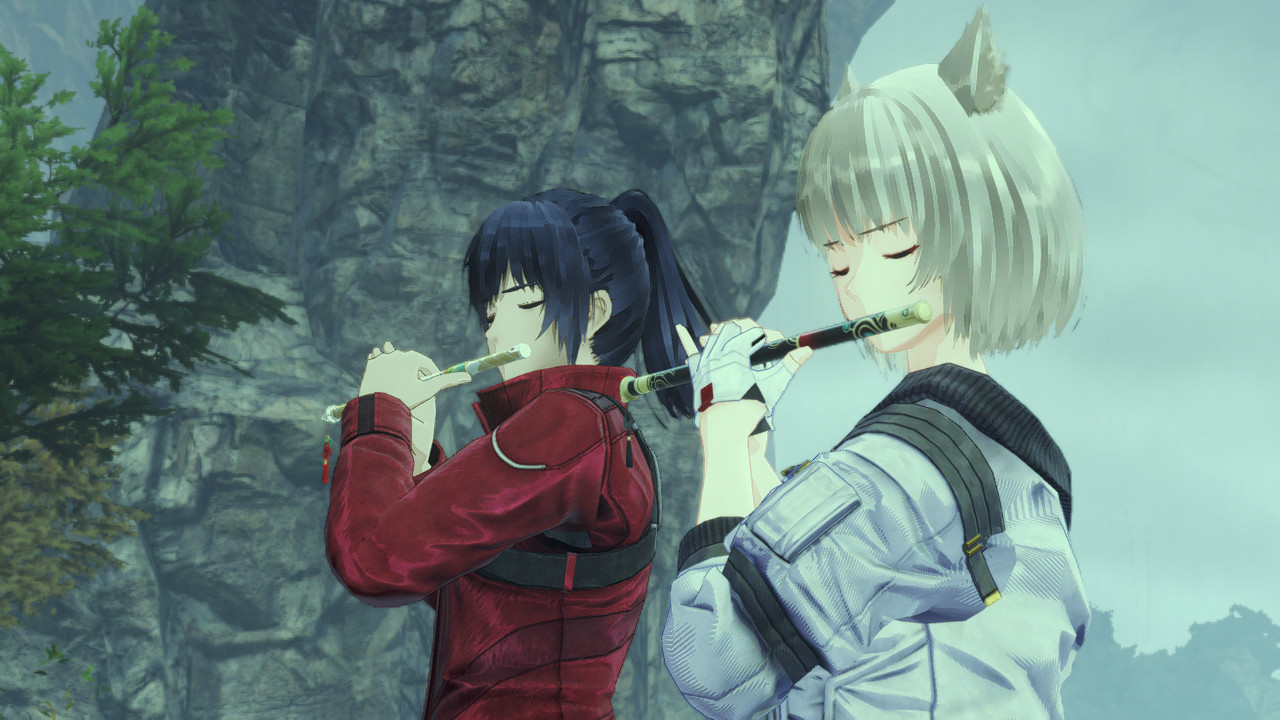
The strongest asset Xenoblade Chronicles 3 has is the sheer power and versatility of its musical score and soundtrack as noted in this review. This is genuinely some of the best RPG music ever made, evoking powerful emotions in pivotal scenes to convey tragedy, grief, frustration, and hope. The cutscenes often feature powerful orchestral arrangements conveying a wide array of emotions, but typically fall in line with any of your strongest musical scores of the fantasy genre. The most common song you’ll hear, ‘A Life Sent On’, is arranged and rearranged to fit a variety of situations, and is the game’s death knell as you send off soldiers in the overworld, but also the heart and soul of the storytelling experience, and the endless toll the characters encounter. And when you hear furious chants of the choir, shit’s about to go down in a boss fight.
The music of Xenoblade Chronicles 3 also serves as a tool to render ambiance regardless of location and situation. The mystery of Maktha Wildwood is encapsulated by swelling string sections; understated, ominous bass and percussion; and fluttering woodwind sections to juxtapose the beauty of its life and equal measures of danger. Torchlight Hill, the first biome of the game, is a desolate wasteland, ravaged by war, and the music captures this emptiness with choral and string notes which fade into the void. Erythia Sea makes use of pristine tones rendered by the piano and strings to convey a terrain preserved from the horrors of war and is arguably among the best tracks of the game.
We could go on endlessly about the beauty of the game’s soundtrack, and for good reason. Along with Manami Kiyota, ACE, Kenji Hiramatsu, and Mariam Abounnasr is longtime franchise composer Yasunori Mitsuda, whose stellar 27-year resume includes work throughout the Xeno series, Final Fantasy, Chrono Cross, Radical Dreamers, and most importantly, his first work, Chrono Trigger, of which he wrote the bulk including its most popular tracks such as ‘Corridors of Time’. This man composed the soundtrack for arguably the greatest RPG ever made alongside Nobuo Uematsu after having freshly graduated from music college and is an absolute legend in the video game music scene. So of course this game has amazing music.
The Issues

As mentioned earlier, it should be noted that framerate drops during especially busy battle sequences do somewhat take you out of the experience, but these tend to smooth themselves out quickly. Additionally, despite the distinct art style, some of the scenery textures will come off looking rather dated, but this is more of a nitpick than an actual issue. Some might find the battle UI to be distracting, but the game also guides you through every facet of it, introducing more elements with plenty of time for players to prepare. The affinity system, while engaging and a good way to immerse the player with the world and its inhabitants feel overly complicated despite such simplistic individual rewards.
Finally, the voice acting overall is strong, but the frequent replaying of sound bits, such as Lanz wanting to show you a “sick new skill” in Interlink, or Eunie talking about Lanz wanting something a bit meatier, will invariably result in memes being made about some of the dialogue. But that’s it, the issues are largely superficial, and low in number as well as significance, especially when you consider the technical marvel that is getting a world and story of this scope on the Nintendo Switch, so kudos to Monolith Soft.
The Verdict
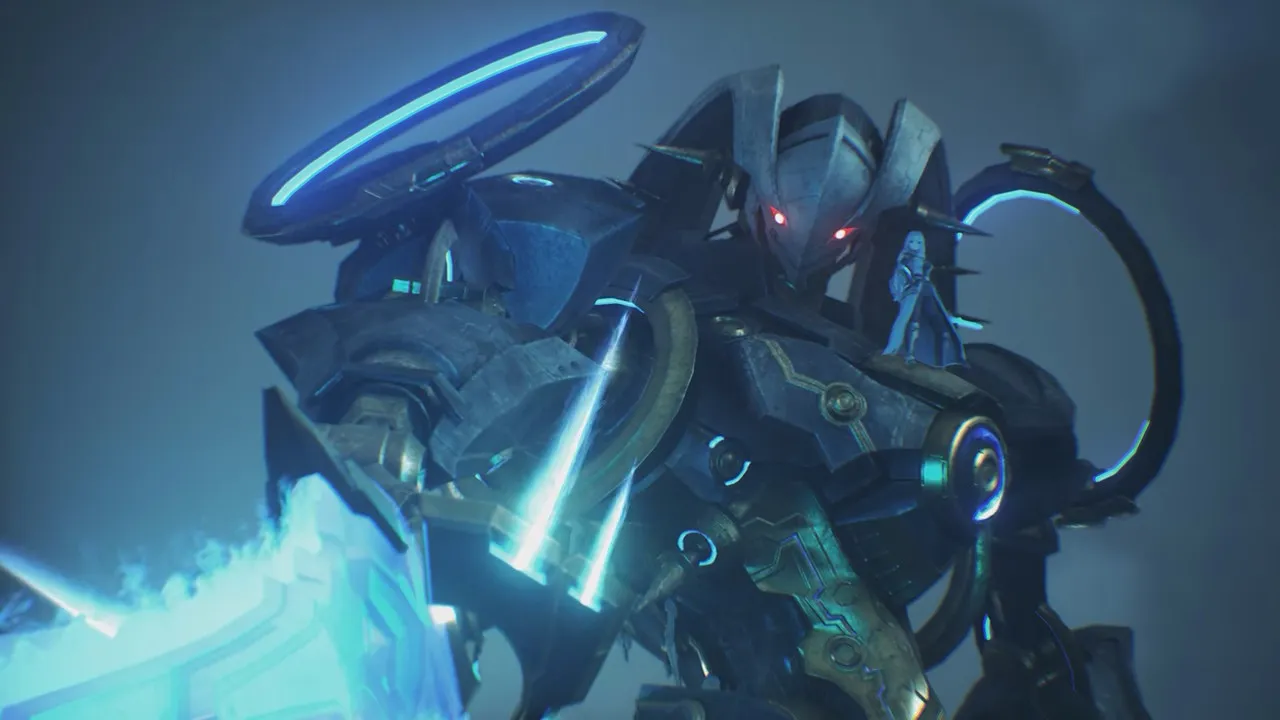
Xenoblade Chronicles 3 is the strongest JRPG in the modern Nintendo catalog, and is among the greatest games on the Nintendo Switch, and can potentially stand the test of time when considered among other platforms and generations as well. It’s a complex, emotional journey, where you and the characters will confront challenging themes and philosophical ideas, and see them through to their respective cathartic conclusions. There are so many scenes, moments, and songs that will bring you to tears, bring forth joy, excitement, and tranquility, and you’ll be intoxicated despite its meaty 100+ hour runtime if you take it in stride. It’s a powerful tale of death, loss, renewal, and love in many forms.
It’s tough to put into concise words just how good this game is, or how much certain people will react to it. But if you open your heart and mind, and have more than a little patience for the sophisticated and complex battle mechanics, you’ll get lost in its main plot, while also falling in love with the many new mechanics, characters, and locales you’ll discover along the way. You can play it to connect the story with those of the previous Xenoblade Chronicles games, but also enjoy it on its own merits as a standalone story. Monolith Soft and Nintendo have truly captured something special with this series, and you’ll be missing out on something truly wonderful if you never try it.
This concludes our review of Xenoblade Chronicles 3. Be sure to check out our guides on the game, and get lost in the world of Aionios.




